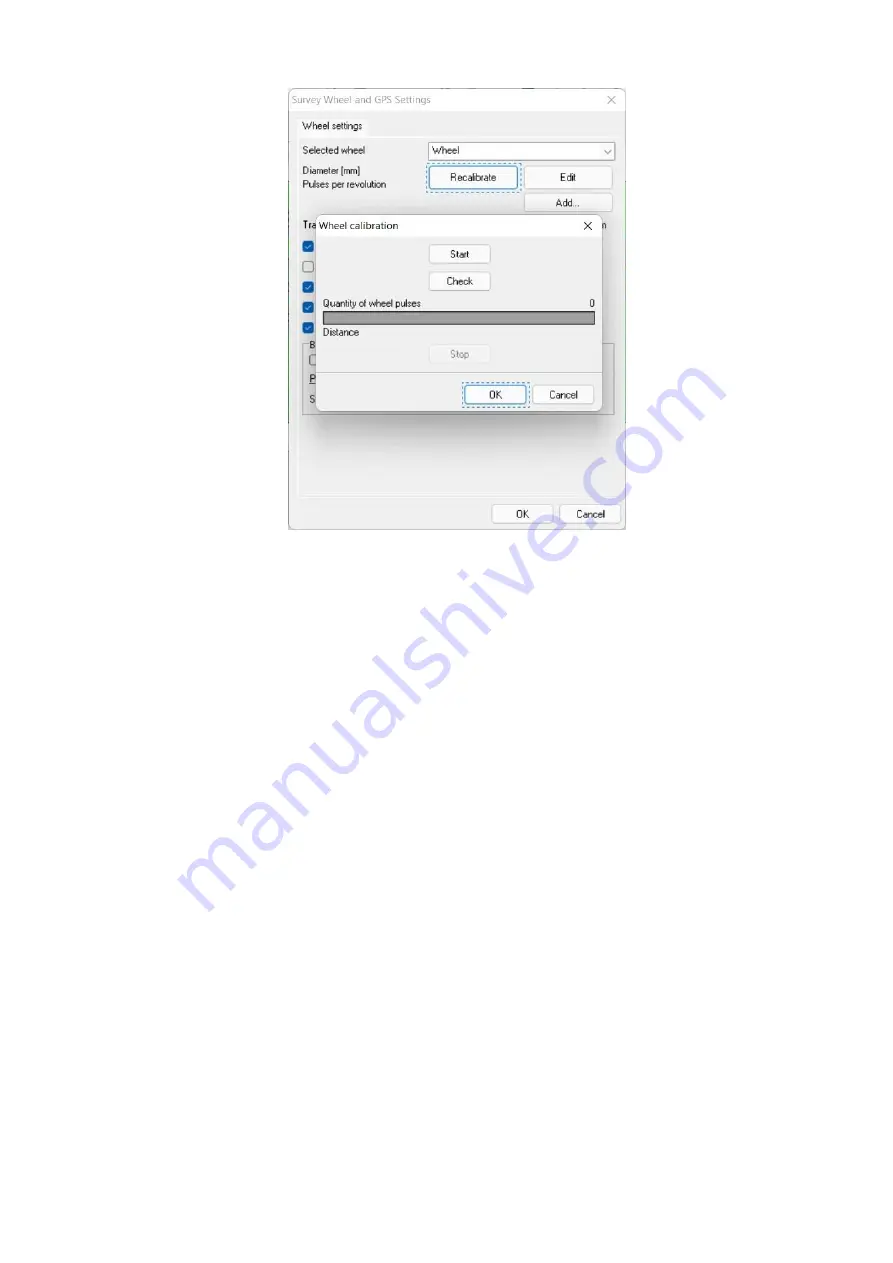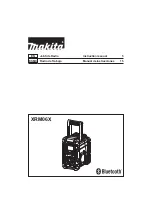
30
Fig.8.4. Survey wheel calibration
Software uses the captured wheel pulses to understand is wheel rotating or not.
If wheel is not moving the traces are not adding to the acquiring profile. The
calculated traveled distance is recording to the header of each acquiring profile
trace.
o
Automatic real time data X-interpolation
– equidistant
traces acquisition,
when each trace has the preliminary defined trace spacing (dX) to each other.
o
Trace spacing [dX]
– is used to adjust the resolution along the profile. This
value depends on the minimum size of the detected object, taking into account
the fact that it is desirable to have 3-5 traces crossing the object. Those if the size
of the object is 15 cm, then the dX should be 5 cm, but preferably 1 cm. But
note, that too small dX leads to traces and the acquired profile increasing. The
dX can be specified both in the wheel settings window and before the each start
of data acquisition. This is controlled by the
Ask about trace spacing before
acquisition
item.
o
Bidirectional wheel
– detection of toward/backward wheel direction.
o
Reverse wheel direction
– wheel direction changing while bidirectional wheel
is used, i.e. backward movement becomes to forward movement and vice versa.
This is may be used for different ways to move the GPR antenna (drag after the
operator or push it in front of him), especially for a shock-proof cart.
o
Replace existing trace data on backward movement
– while the antenna
moves forward, the profile is displayed on the screen from left to right, but if
antenna moves back, then the profile also builds back, i.e. from right to left with
a white vertical marker in front. If the antenna moves back along exactly the
same path, then it looks like a white vertical marker moving back along the
profile. This feature of the wheel is very useful for pinpointing of underground
utilities; the vertical white marker aligns exactly with the top of the hyperbola
















































